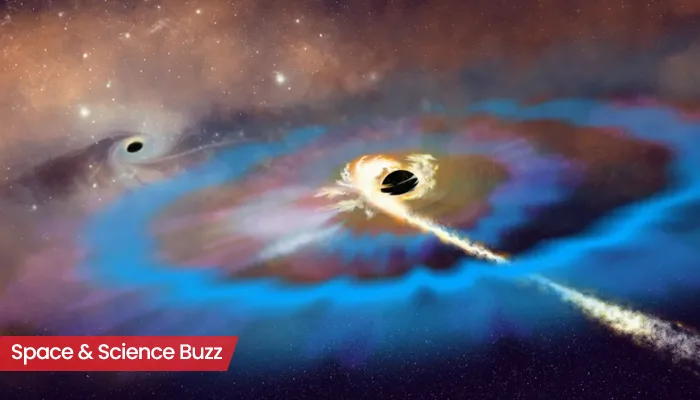Lunar Hideaway: Exciting Details to Future Space Habitation Prospects as Scientists Discover Cave on Moon
- Admin
- 1 year ago
- 3 minutes read

The fictional story of space habitation might turn into reality with the recent findings of cave on lunar surface.
What is science fiction? It's only tomorrow’s reality! What will happen if the earth gets destroyed by climate change or an asteroid impact? The only way to save human species from destruction is colonizing in other places in the space. With that hope, scientists are exploring options for space habitats. In this article, we will discuss about recent findings on cave beneath lunar surface which can potentially host humans in coming days.
Lunar Cave Findings:
A group of Italian scientists, after analysing radar data collected by NASA's Lunar Reconnaissance Orbiter (LRO), compared the results with lava tubes on Earth to reveal the position of the cave. The recently found “cave” is accessible from the deepest known pit on the lunar surface, situated at the Mare Tranquillitatis (also known as Sea of Tranquility). Till now, over 200 such pits were discovered on the lunar surface. The scientists confirmed that it was “created by the collapse of a lava tube.”
In 1969, Neil Armstrong and Buzz Aldrin landed on the Moon for the first time through Apollo 11. Meanwhile newly discovered underground cave is only 400 kilometres from that site.
Size & Shape of the Cave:
The cave is around 45 meters wide and up to 80 meters long, situated approximately 150 meters beneath the lunar surface. The overall size is almost equivalent in area to 14 tennis courts.
Why is It Important?
Understanding the lunar environment will give a detailed idea about past and future of the Earth. Usually, the entire solar system gets a lot of radiations which are harmful in nature. These holes can provide the suitable base camp for astronauts to prevent themselves from these radiations.
As per publish research paper, “the cave is a promising site for a lunar base as it offers shelter from the harsh surface environment and could support long-term human exploration of the Moon.”
Human Base on the Moon Surface:
Currently, NASA is planning to develop a “semi-permanent crewed base” on the lunar surface. Chinese and Russian scientists have also shown interest in this project. However, this can only be possible in an environment fully protected from cosmic radiation as well as having stable temperature. This type of cave can also act as “emergency lunar shelter” to prevent astronauts from cosmic rays, micrometeorites or solar radiation during moon mission.
Similar Spot on Mars for Manned Mission:
NASA scientists have also found a possible spot or hole for landing of manned spacecraft on the Mars. According to Space.com reports: “These holes could shelter the astronauts in the future. For one, they could provide shelter for astronauts in the future; because Mars has a thin atmosphere and lacks a global magnetic field, it cannot ward off radiation from space the way that Earth does. Consequently, radiation exposure on the Martian surface averages between 40 and 50 times greater than on Earth.”
Meanwhile, spotted pits were first observed on lunar surface nearly a decade ago. It was first considered as “skylights that connect to underground caves such as lava tubes, giant underground tunnels that form through volcanic processes,” as per The Guardian reports.
Will fiction turn into reality? Will Humans set up homes on the Lunar surface? Only time will tell!


.webp)
.WEBP)
.WEBP)
.webp)
.webp)


.webp)
.webp)
.webp)
